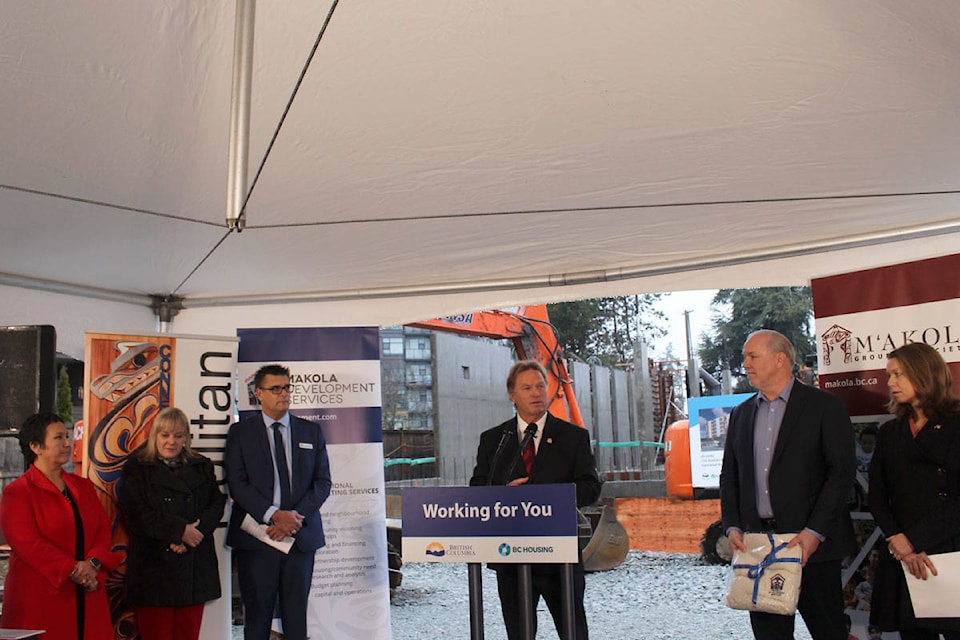Indigenous families in need will have access to more affordable housing in Langford with 40 homes being added to M’akola Housing Society’s Station Avenue development.
The provincial government announced the additional homes Thursday at the project site, alongside representatives from M’akola Housing Group and Hulitan Family and Community Services Society.
Langford Mayor Stew Young and Premier John Horgan both expressed their support for the housing project.
“[The] two- and three-bedroom units will allow people to move into the community, to put down the roots that all of us need — Indigenous and non-Indigenous — to realize [our] potential,” Horgan said. “Housing is foundational to our lives, to our success as individuals and as a community.”
Phase one of the housing project will involve the construction of a six storey apartment that will include 60 homes and commercial office space on the main floor for M’akola Development Services and Hulitan Family and Community Services Society, which offers services and programs for Indigenous youth and families. It is expected to be complete by March 2020.
READ MORE: More housing for Indigenous peoples coming to Langford, Colwood
Phase two of the project will involve the construction of the additional 40 homes.
Rents in the first phase will range from about $640 per month for a studio to $1,500 per month for a three bedroom unit.
Young noted Coun. Lanny Seaton once owned the property where the project is being built, but back then there was only one house on it.
“To go from one house to 100 units for people in need is something I’m sure your dad and your mother would be appreciative of,” Young said to Seaton. “This is what Langford’s all about.”
The province is investing $12 million towards phase one of the project through the Provincial Investment in Affordable Housing Program as well as $8 million towards phase two through the Building BC: Indigenous Housing Fund.
The Capital Regional District will see about $33 million for more than 160 homes from the province through the Indigenous Housing Fund.
M’akola Group CEO Kevin Albers said M’akola Housing Society, M’akola Development Services and Hulitan Family and Community Services Society came together to come up with the plan for the development.
READ MORE: B.C. invests in 1,100 new homes for Indigenous residents
“Supporting Indigenous people, families, and where they choose to live — be it on or off reserve — is the most powerful thing that we can do to support Indigenous people and move towards reconciliation,” Albers said.
Kendra Gage, executive director of Hulitan Family and Community Services Society added she is grateful they will have the opportunity to work with M’akola Group and provide services to families.
“Not only are we housing families but this opportunity will give parents the ability to have their children return from the ministry’s care and will allow the children to stay in their family homes,” Gage said. “This project is a testament to what occurs when Indigenous organizations come together, and our communities are stronger because of it.”
Young said having the opportunity to build in Langford’s downtown core close to transportation corridors will be good for the community.
“It’s about creating opportunity for all different levels of housing,” Young said. “[Residents] recognize that affordability and providing space for all different families is important … affordability and density in the downtown core is what builds and strengthens community.”
shalu.mehta@goldstreamgazette.com
